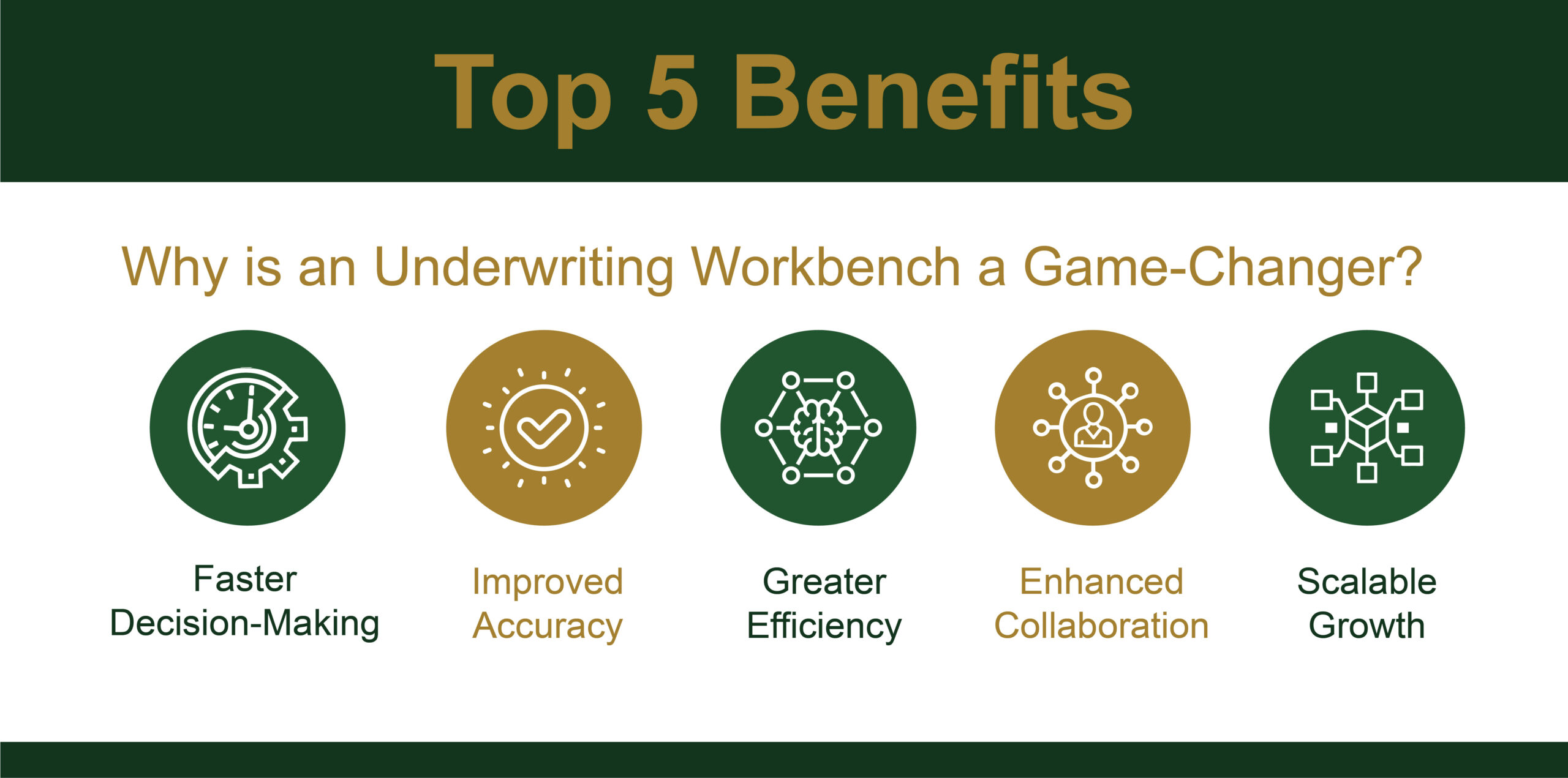Nov 14, 2025
Why Human-in-the-Loop is Essential in Insurance AI
Table of Contents
Talk to an Expert
See how the IntellectAI’s Xponent underwriting platform gives your team the efficiency tools to drive real, profitable results
November 14, 2025
What is an Underwriting Workbench? A Beginner’s Guide
Traditional underwriting has always been complex and often frustrating. Manual data entry, disconnected systems, back-and-forth emails, and time-consuming risk assessments slow everything down. Decisions take longer, accuracy can slip, and underwriters spend more time collecting information than actually evaluating.
That’s where an underwriting workbench comes into play. Think of it as a simple, digital cockpit for the modern underwriter. A place where data, tools, and automation come together to make the underwriting process faster, smarter, and more consistent.
Unpacking the Definition: What Exactly is an Underwriting Workbench?
An underwriting workbench is a centralized insurance underwriting software solution that brings together all the systems, data, and workflows an underwriter needs into one unified platform. Its core purpose is simple:
- Centralize information from multiple sources
- Automate repetitive tasks like data entry and eligibility checks
- Support better, data-driven decisions with integrated analytics
A modern underwriting platform integrates seamlessly with core systems, like a policy administration system, CRM, and other risk assessment tools in insurance. It can also connect to third-party data sources, including credit data, geospatial, and climate information. This allows underwriters to see the full risk in one place.
The Core Components: What’s Inside an Underwriting Workbench?
Unified Dashboard and Case Management
The dashboard is the heart of any underwriting workbench platform. It provides underwriters with a single platform to manage all submissions, track progress, view documents, and collaborate with colleagues, all without needing to switch between multiple systems.
Automated Rules Engine
This is where underwriting automation happens. The rules engine applies pre-defined logic to automatically triage submissions, flag exceptions, and ensure underwriting guidelines are followed consistently. It saves time and reduces human error.
Data Integration Hub
A powerful integration hub pulls together internal and external data sources, providing underwriters with the context they need for quick and confident decisions. No more copying and pasting information from different systems
Collaboration Tools
Underwriting is rarely a solo job. Built-in messaging, tagging, and task assignment features make it easy for teams to work together, review cases, and escalate complex risks without leaving the platform.
Analytics and Reporting
Embedded analytics transform raw data into insights. From performance dashboards to trend analysis, these tools help insurers identify patterns, measure underwriting process efficiency, and continuously improve.
Top 5 Benefits: Why is an Underwriting Workbench a Game-Changer?

- Faster Decision-Making: Automation and centralized access to data reduce turnaround times dramatically
- Improved Accuracy: Integrated data sources and rule-based validation minimize manual errors.
- Greater Efficiency: Underwriters spend more time evaluating risks and less time chasing information.
- Enhanced Collaboration: Everyone works within the same system, improving communication and consistency.
- Scalable Growth: As volume increases, automation and smart workflows keep productivity high without adding headcount.
Fewer bottlenecks, better insights, and stronger underwriting performance are the core benefits of an underwriting workbench.
Underwriting Workbench vs Policy Administration System: What’s the Difference?
| Feature | Underwriting Workbench | Policy Administration System (PAS) |
|---|---|---|
| Primary Focus | Risk assessment, decision-making, case management | Policy lifecycle management (quoting, binding, endorsements,and billing) |
| Core User | Underwriter | Policy administrators, agents |
| Main Goal | To accept, price, or decline risks | To issue and service a policy |
While a policy administration system is crucial for managing policies after they’re issued, a P&C underwriting workbench drives decision-making before that stage.
Who Needs an Underwriting Workbench?
Underwriters at nearly every insurance carrier can benefit, but P&C and specialty line carriers can see the biggest impact. These segments handle complex, data-heavy submissions that demand both speed and accuracy.
A smart underwriting platform helps underwriters evaluate risks efficiently, ensure consistency across teams, and focus on the cases that truly need human judgment.
The Future is Digital: The Evolution of Underwriting
The underwriting process is shifting from reactive to manual to proactive and data-driven. The underwriting workbench is central to that evolution. It’s the foundation that supports digital underwriting, intelligent automation, and better decision-making across the board.
As insurers continue to modernize, the workbench will only grow more powerful, connecting even more risk assessment tools in insurance and enabling continuous optimization through analytics and AI.
Ready to Modernize Your Underwriting Process?
If you’re ready to replace manual processes with intelligent automation and give your underwriters the tools they deserve, it’s time to explore what a modern underwriting workbench platform, like IntellectAI’s Xponent, can do for your organization.
Schedule a 1:1 strategic meeting with our team to see how a unified, data-driven approach can transform your underwriting performance.














